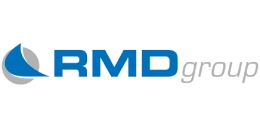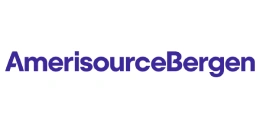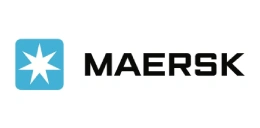Air Cooler Cost Model: Cooling Value Monitor
_11zon.webp)
What is Air Cooler?
Air coolers are evaporative coolers based on the principle of water evaporation, utilizing a fan or blower to blow cooled air, as opposed to air conditioners, which function based on refrigerant and compressor principles. Air coolers are designed to deliver low-cost and energy-efficient temperature management, mainly applicable to dry and hot climates.
Key Applications Across Industries:
They generally consist of a pump, motor, cooling pads, water tank, blower/fan, and electronic control units. Main characteristics are low energy usage, environmental friendliness, portability, and low cost. Production of air coolers typically consists of combining sheet metal or plastic enclosures with motor-driven fans, water distribution networks, and cellulose or aspen cooling pads. Their uses range from homes to small industries, workshops, and half-outdoor settings where natural air circulation is desired. Benefits are low operating expense, simplicity in maintenance, and utilization of water as a natural coolant, which precludes the use of ozone-depleting refrigerants. With increasing concerns regarding sustainability and energy conservation, air coolers are becoming popular as a green alternative to traditional cooling systems. The future prospect continues to look optimistic with innovations centered on smart connectivity, solar-based models, and improved cooling pad technologies to increase applications in both urban and rural areas.
What the Expert Says: Market Overview & Growth Drivers
The global air cooler market size reached USD 2.32 Billion in 2024. According to IMARC Group, the market is projected to reach USD 5.15 Billion by 2033, at a projected CAGR of 8.7% during 2025-2033. The market for air coolers is driven by a number of long-term drivers. Exponentially higher energy prices and growing consumer consciousness toward environmentally friendly cooling solutions drive demand through residential and commercial segments.
Population increases and growing middle-class incomes in developing economies are driving adoption, especially where air conditioning is still not cost-effective. Government policies encouraging energy savings and less carbon emissions also drive market growth. Seasonal sales cycles, especially in countries with long summers, also provide robust recurring revenues. In the future, trends involve the integration of IoT-enabled smart coolers, hybrid solutions that integrate cooling with air purification, and solar-powered models for off-grid rural markets. Producers are using lightweight materials and modular constructions to increase portability and efficiency. Competitive edges of air coolers are that they are affordable, easy to maintain, and environmentally friendly as opposed to traditional ACs. Despite that, setbacks like limited performance in humid environments and reliance on water supply persist. In the realm of sustainability, implementation of biodegradable cooling pads and renewable energy is being increasingly explored. Industry reactions have been vigorous, with businesses broadening product offerings, strengthening R&D spending, and conforming to local climatic requirements to consolidate market positions.
Case Study on Cost Model of Air Cooler Manufacturing Plant:
Objective
One of our clients reached out to us to conduct a feasibility study for setting up a medium-scale air-cooler manufacturing plant.
IMARC Approach: Comprehensive Financial Feasibility
We developed a comprehensive financial model for the setup and operation of a proposed air cooler manufacturing plant in India. This plant is designed to produce 25,000 units of air cooler annually.
Manufacturing Process: Commercial production of air coolers includes sequential processes aimed at combining mechanical, electrical, and water-based elements for efficient cooling. Production commences with raw material preparation, with sheet metals or molded plastics being molded into housing structures through stamping, bending, or injection molding. Cooling pads, which are commonly cellulose or aspen, are trimmed and fitted into specifically provided compartments. Water circulation is constructed with pumps, pipelines, and distribution trays to provide even wetting of pads. Motors and blowers or axial fans are mounted to provide air circulation. Wiring is done in intermediate steps, followed by integration of control switches or electronic panels, and casters are fitted for portability. Quality control measures entail air flow rate testing, water distribution, noise, and cooling performance testing. Leak testing and electrical safety testing for compliance are done on units. Cleaning operations like degreasing and removal of dust are performed for maintaining hygiene. The last steps are painting or coating of outside components, adding logos and branding, and packaging with protecting materials for secure shipment. Products are then shipped for residential, commercial, or rural deployment.
_11zon.webp)
Get a Tailored Feasibility Report for Your Project Request Sample
Raw Material Required:
The basic raw materials required for air cooler manufacturing include metals, plastics, water-based components, and electrical parts. Key raw materials include:
- GI Sheet Metal
- Plastic Body Panels
- Grills & Louvers
- Wheels
- Handles & Frame Supports
- Cooling Pads (Honeycomb Cellulose)
- Plastic Pad Frames
- Submersible Water Pump
- Water Distribution Pipe System
- Float Valve / Water Level Sensor
- Fan Blades
- Blowers
- Single-Phase Induction Motor
- Plastic Fan Guard
- Belt & Pulley System
- Rotary Switches / Push Button / Touch Panel
- Capacitors
- Wiring Harness (PVC Insulated Copper Wires)
- PCB And Electronic Controller
- Thermal Cut-Off / Fuse LED Indicators / Display Panel
- Fasteners (Screws, Bolts, Nuts, Rivets)
- Adhesives & Sealants (Silicone, Epoxy)
- Rubber Gaskets & Washers
- Insulation Material
- Powder Coating / Paint
- Plastic Granules
- Labels & Nameplates
- Thermocol / Foam Sheets
- Corrugated Cartons
- Shrink Wrap / Strapping Material
Machineries Required:
- Shearing Machine
- CNC Turret Punch / Power Press
- Press Brake / Bending Machine
- Hydraulic Deep Draw Press
- Spot Welding Machine
- Powder Coating Plant / Spray Painting Booth
- Injection Moulding Machine
- Blow Moulding Machine
- Rotational Moulding Machine
- Ultrasonic Welding Machine
- Cooling Pad Cutting & Shaping Machine
- Pad Framing Machine
- Water Pump Assembly Line
- Pipe Cutting & Fitting Tools
- Fan Blade Balancing Machine
- Motor Winding Machine
- Motor Testing Bench
- Bearing Press Machine
- Assembly Conveyor Line
- Fastening Tools (Pneumatic/Electric Screwdrivers)
- Leak Testing Machine
- Electrical Safety Testing Equipment
- Performance Testing Chamber
- Strapping Machine
- Shrink Wrapping Machine
- Carton Sealing Machine
Techno-Commercial Parameter:
- Capital Investment (CapEx): Capital investment in an air cooler production plant includes various elements necessary to set up large-scale production. Land procurement and civil work constitute the first investment, including factory erection, warehouses, and provision of water and electricity setups. Equipment and machinery constitute the bulk of the CapEx, including injection moulding machines, sheet metal stamping machines, fan and motor assembly lines, welding cells, painting/coating systems, and packaging equipment. There is specialized equipment required for cooling pad cutting and installation and water pump and motor testing. Material handling equipment like conveyors and forklifts improve the efficiency of production. Airflow, energy consumption, and durability testing laboratories are also part of fixed investments. IT systems, design software, and automation technologies facilitate production planning and quality control. Safety gear, effluent treatment plants, and renewable energy devices find use to increase adherence to sustainability requirements. The factory layout is instrumental in providing efficient workflow, energy conservation, and employee productivity. Cumulatively, these investments form a scalable and productive basis for addressing air cooler market seasonality peaks in demand.
- Operating Expenditure (OpEx): Operating costs at an air cooler factory cover all the recurring expenses in terms of raw materials, utilities, labor, and logistics. Raw material expenses are quite high, with motors, fans, cooling pads, and plastic housings making up the lion's share of expense. Utility costs, although lesser in the case of AC plants, account for electricity and water utilized during testing and assembly. Labor compensation, training, and management of personnel contribute to repetitive expenditure, especially across high-season production runs. Equipment maintenance, spare part purchases, and testing system calibration are routine operational requirements. Packaging, warehousing, and logistics are significant costs, considering the mass and volume of air coolers. Marketing promotions, dealer schemes, and sales service networks also add up to OpEx since differentiation of brands is essential in this price-conscious market. Depreciation on plant and machinery, insurance cost, and safety and environment-related norms add up to more layers of costs. With increasing focus on sustainability, cost of recycling programs, energy-conserving measures, and water usage optimization are also added. Successful OpEx management is about streamlining procurement, enhancing supply chain agility, and automating assembly and testing operations to guarantee sustainable profitability. Furthermore, raw material cost ranges between 65-70%, labor cost ranges between 10% to 15%, and all other costs ranges between 15-25% in the proposed plant.
- Profitability Analysis Year on Year Basis: We assisted our client in developing a detailed cost model, which projects steady growth, with revenue rising throughout the projected period. Moreover, gross profit margins lie between a range of 20-30%, and net profit lie between the range of 12-18% during the income projection years, highlighting strong financial viability and profitability.
Conclusion & IMARC's Impact:
Our financial model for the air cooler manufacturing plant was meticulously developed to meet the client’s objectives, providing an in-depth analysis of production costs, including raw materials, manufacturing, capital expenditure, and operational expenses. By addressing the specific requirements of producing 25,000 units of air cooler annually, we successfully identified key cost drivers and projected profitability, considering market trends, inflation, and potential fluctuations in raw material prices. This comprehensive financial model equipped the client with valuable insights into strategic decision-making, demonstrating our commitment to delivering high-quality, client-focused solutions that ensure the long-term success of large-scale manufacturing ventures.
Latest News and Developments:
- In August 2025, the consumer appliance company Kenstar has introduced the first line of energy-efficient air coolers with a 5-star BEE rating in India. The company's headquarters are in Gurugram, Haryana, where the new range was introduced. With entry-level models starting at Rs 6,000 and luxury variants reaching Rs 20,000, the lineup is made to appeal to a variety of consumer sectors.
- In August 2025, Raj Cooling Systems Pvt. Ltd., has announced that it will be attending the 138th Canton Fair, which will take place in Guangzhou, China, from October 15–19, 2025. The company will launch its new Domestic Air Cooler Range, designed to satisfy contemporary family demands with an emphasis on performance, appearance and cost.
- In March 2025, CG Power and Industrial Solutions Ltd. announced the arrival of a new line of air coolers using JetChill technology. CG Power's position in the consumer durables industry is strengthened by this cutting-edge cooling technology, which guarantees faster cooling and improves airflow efficiency.
Why Choose IMARC:
IMARC's Financial Model Expertise: Helping Our Clients Explore Industry Economics
IMARC is a global market research company that offers a wide range of services, including market entry and expansion, market entry and opportunity assessment, competitive intelligence and benchmarking, procurement research, pricing and cost research, regulatory approvals and licensing, factory setup, factory auditing, company incorporation, incubation services, recruitment services, and marketing and sales.
Under our factory setup services, we assist our clients in exploring the feasibility of their plants by providing comprehensive financial modeling. Additionally, we offer end-to-end consultation for setting up a plant in India or abroad. Our financial modeling includes an analysis of capital expenditure (CapEx) required to establish the manufacturing facility, covering costs such as land acquisition, building infrastructure, purchasing high-tech production equipment, and installation. Furthermore, the layout and design of the factory significantly influence operational efficiency, energy consumption, and labor productivity, all of which impact long-term operational expenditure (OpEx). So, every parameter is covered in the analysis.
At IMARC, we leverage our comprehensive market research expertise to support companies in every aspect of their business journey, from market entry and expansion to operational efficiency and innovation. By integrating our factory setup services with our deep knowledge of industry dynamics, we empower our clients to not only establish manufacturing facilities but also strategically position themselves in highly competitive markets. Our financial modeling and end-to-end consultation services ensure that clients can explore the feasibility of their plant setups while also gaining insights into competitors' strategies, technological advancements, and regulatory landscapes. This holistic approach enables our clients to make informed decisions, optimize their operations, and align with sustainable practices, ultimately driving long-term success and growth.
Our Clients
Contact Us
Have a question or need assistance?
Please complete the form with your inquiry or reach out to us at
Phone Number
+91-120-433-0800+1-201-971-6302
+44-753-714-6104










